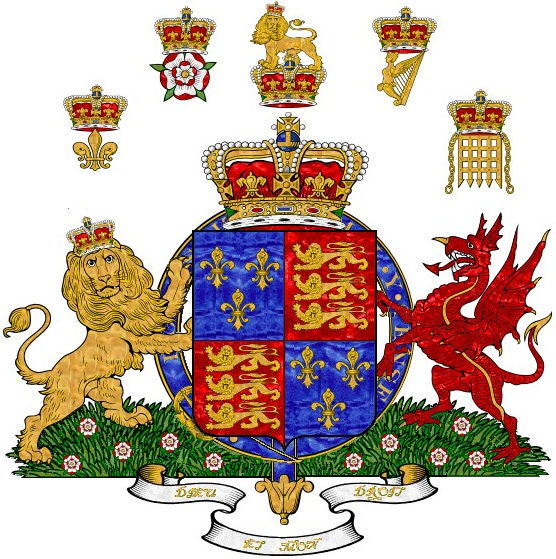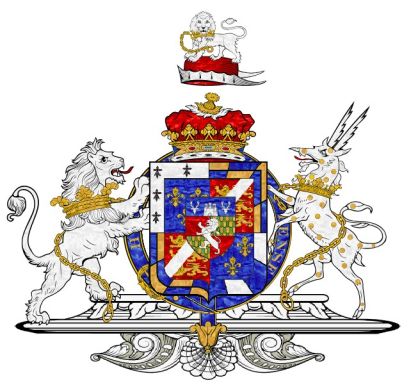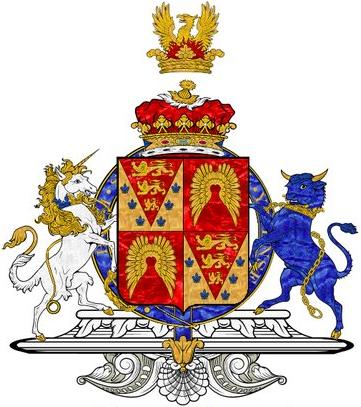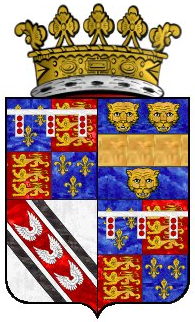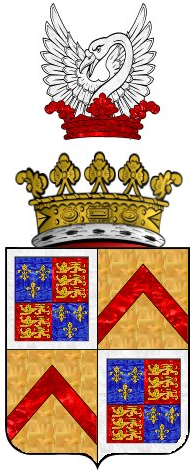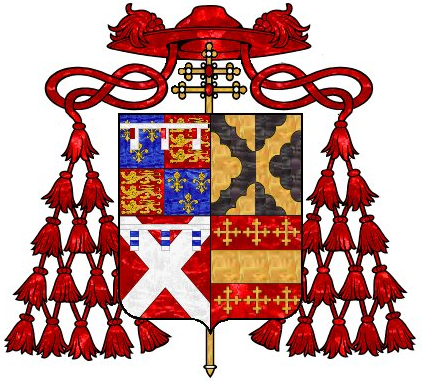HERALDRY of the Tudors
Jump to navigation
Jump to search
<a class="external" href="http://www.baronage.co.uk/bphtm-01/badges02.html" rel="nofollow" target="_blank" title="Heraldic Badges Part 2 - Baronage website">
</a>
</a>
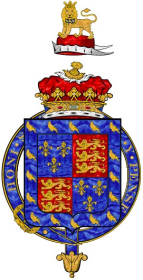 Tudor Heraldic Badges Coats of Arms & Their Meanings
|
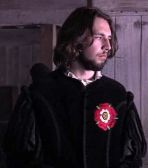 Heraldic badges were emblems or personal devices used to denote the property of an individual (or family) and worn as an allegiance by the followers, retainers, dependants and partisans of powerful personages. Heraldic badges were emblems or personal devices used to denote the property of an individual (or family) and worn as an allegiance by the followers, retainers, dependants and partisans of powerful personages. The badge itself is actually older than the heraldic system. Such a symbol identifying a person, a body, or an impersonal idea can be found from ancient times. It was not uncommon for the same personage or family to use more than one badge; and, on the other hand, two or more badges were often borne in combination, to form a single compound device. Not to be confused with a coat of arms which were historically used by knights to differentiate them from enemy soldiers and used exclusively by the individual to whom it belonged. However, sometimes an element from the coat of arms was used for a badge. |
"There was never any fixed form for the badge; there was never any fixed manner of usage. ....... The Badge...was worn by the servants and retainers, and was used right and left on belongings of the owner as a sign of his ownership. So great and extensive at one period were these badges that they were far more generally employed than either arms or crest. and whilst the knowledge of a man's badge or badges would be everyday knowledge and common repute throughout the kingdom, few people would know that man's crest, fewer still would ever have seen it worn." - A Complete Guide to Heraldry by Arthur Charles Fox Davies, Graham Jonhston |
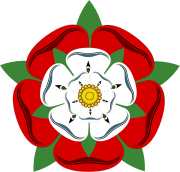 King Henry VIII ( & all the Tudor dynasty) Motto: God and my Right Symbol : Tudor Rose (sometimes crowned and over a portcullis and sometimes within a heart) After the War of the Roses, Henry VII adopted the Union Rose of the White Rose of York and the Red Rose of Lancaster. The Beaufort portcullis signifying his tenuous link to royal blood through Margaret Beaufort. Heraldic meanings: Rose Red: Grace and beauty Rose White: Love and faith The rose is a symbol of hope and joy; it is first among flowers and expresses beauty and grace. With a red blossom, it is a symbol of martyrdom. The white rose expresses love and faith and in Christian symbolism, it signifies purity. |
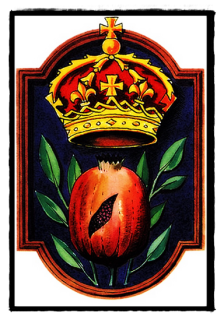 Queen Katherine of Aragon Motto: Humble & Loyal * Symbol: A crowned pomegranate. Heraldic Meaning: Pomegranate: Fertility and abundance The association is derived from the fact that the pomegranate is a fruit composed almost entirely of seeds and was thought to reproduce itself prodigiously because of this. The pomegranate dimidiated with a rose, meaning that the two half charges are joined, was one of the badges of Katherine's daughter Queen Mary I. The crown is an emblem of victory, sovereignty, and empire. It is a visible sign of success, thus the term "crowning achievement," and its significance as the decoration of the ultimate level of rank and power, makes bearing the crown a great honour. Crowns are sometimes a symbol of God, as he is considered by some to be the “King of all.” The word crown blazoned without any additional details usually implies a ducal coronet without a cap. *Before marriage to Henry her motto was "Not For My Crown "(As Princess of Wales & Dowager) | 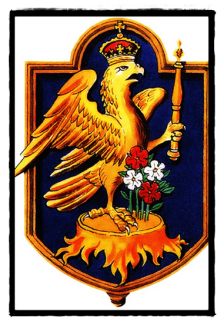 Queen Anne Boleyn Motto: the Most Happy Symbol : Crowned falcon holding a sceptre on a tree stump with red and white flowers sprouting. The white falcon was derived from the heraldic crest of the Earls of Ormonde as her father had been recognized as the heir. The tree stump signifying the previous barrenness of the Tudor stock. The sceptre a sign of authority from God. Heraldic Meanings: Falcon/Hawk: One who does not rest until objective achieved The falcon or hawk signifies someone who is hot or eager in the pursuit of an object much desired. It is frequently found in the coats of arms of nobility from the time when the falcon played an important social role in the sport of kings and nobles. It is found as a heraldic bearing as early as the reign of King Edward II of England. It was also later adopted by her daughter Queen Elizabeth I. See also : Falconry in the Tudors Sceptre : Justice and a chief emblem of royal authority Tree: The tree is a symbol of antiquity and strength. a tree stump or tree trunk may be used as a symbol of re-growth and rebirth, especially when it is borne with branches spouting new leaves or in t this case small red & roses signifying young Tudor offspring. | 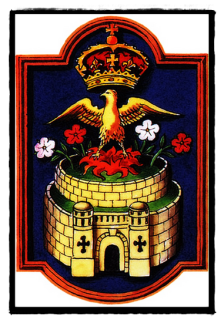 Queen Jane Seymour Motto: Bound to Obey & Serve Symbol: Crowned phoenix rising from a Castle, between two red & white Tudor Roses Heraldic Meanings: Phoenix: Resurrection The phoenix is a symbol from Greek mythology, of immortality, rebirth and renewal. Legend states that at the end of its long life, this legendary bird built a pyre of spice-wood in the desert. It ignited the pyre by fanning its wings in the heat of the sun, plunged into the fire and was burned to ashes. Then a rejuvenated phoenix rose out of the cinders, born again. The phoenix is also a symbol of love. It is often found as a symbol on a crest, accompanied by the flames that it rose out of renewed. Castle: Safety. May represent an actual building. The castle, or fort, has often been granted to one who has faithfully held a castle for his sovereign, or who has captured one by force or stratagem. The castle signifies spiritual power and vigilance on the watch as well as home and safety. The tower is very similar to this and is an emblem of grandeur and society. It is a symbol of defense and of a steadfast individual. The visual difference between a tower and a castle is that a tower is a single column topped by a turret, and a castle usually has two towers joined by a wall with a door in it. |
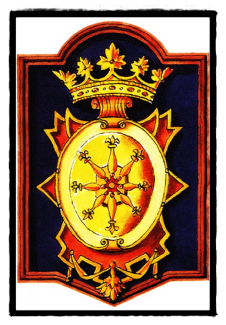 Queen Anne of Cleves Motto: God Send me Well to Keep Symbol: a gold escarbuncle The escarbuncle is a symbol of supremacy and it is an interesting example of a charge developed by the evolution of the shield itself. In ancient warfare iron bands stemming from the center and radiating outwards were used to strengthen the shield for better protection in battle. Over time the pattern made by these bands was adopted as a charge and called in heraldic terms an escarbuncle. However it is also accepted as a representation of a brilliant gem. Heraldic meanings: Escarbuncle: supremacy, a brilliant gem The color gold: Generosity, enlightenment | 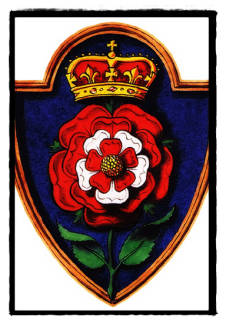 Queen Katherine Howard Motto: No Other Will than His Symbol: Crowned union white & red rose without a thorn Heraldic meanings: Rose Red: Grace and beauty Rose White: Love and faith (same as Henry's - except without a thorn) "A Rose without a thorn." | 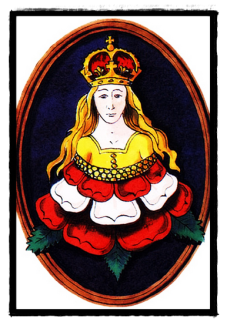 Queen Catherine Parr Motto: To be Useful in all that I do Symbol: A Maidens Head Crowned, rising from a large Tudor Rose Heraldic Meaning: This is a symbol of youth, freshness, and innocence. The figure of a Woman is sometimes a representation of a goddess, or the personification of a virtue, such as justice. Catherine used her patron saint, St. Catherine of Alexandria, as inspiration for her badge. The maidenhead had long been associated with the Parr family badge/arms. Previous to her marriage, the Parr family assumed as one of their badges derived, from the family of Ros of Kendal, the device of a maiden's head couped below the breast vested in ermine and gold; her hair of the last, or; and her head encircled with a wreath of red and white roses. The maidens can be found on the walls of the Parr Chapel in Kendal Parish Church. |
| Coats of arms belong to individuals. For any person to have a right to a coat of arms they must either have had it granted to them or be descended in the legitimate male line from a person to whom arms were granted or confirmed in the past. There is no such thing as a 'coat of arms for a surname'. Many people of the same surname will often be entitled to completely different coats of arms, and many of that surname will be entitled to no coat of arms. A crest is a specific part of a full achievement of arms: the three-dimensional object placed on top of the helm. It is a popular misconception that the word 'crest' describes a whole coat of arms or any heraldic device |
Tudor Coats of Arms Consists of a shield of arms, usually with the addition of a crest borne upon a helmet (upon which rests on a wreath) and frequently with a motto beneath. |
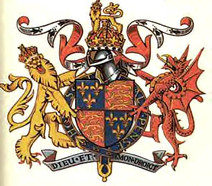 King Henry VIII | 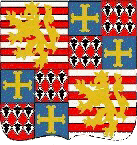 Shield of Charles Brandon, 1st Duke of Suffolk | 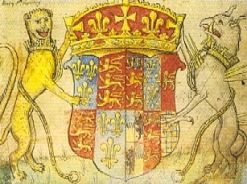 Queen Anne Boleyn's coat of arms Queen Anne Boleyn's coat of arms |
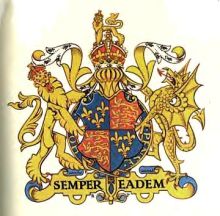 Queen Elizabeth I | ||
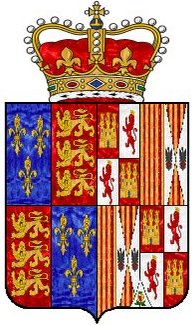 Katherine of Aragon Katherine of AragonKatherine's coat of arms consists of the Tudor coat of arms on the left half combined with the family coat of arms of her parents, the Catholic Monarchs, Isabella I of Castile and Ferdinand II of Aragon. (The Castilian and Leonese House of Trastamara) Quarterly 1st and 4th grand quarter Castile and León; Aragon and Sicily; and in the base point, Argent, a pomegranate slipped Proper to represent Granada. | 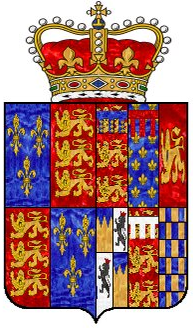 Anne Boleyn Anne BoleynAnne's coat of arms consists of the Tudor coat of arms on the left half combined with the family coat of arms of her ancestors [distant and remote]. The Arms of Queen Anne are the first which exemplify the usage, introduced by Henry VIII, of granting to his Consorts "Augmentations" to their paternal arms. It is a striking illustration of the degenerate condition of Heraldry under the second Tudor Sovereign. Quarterly of six: Duchy of Lancaster; Anjou-Naples; Aquitaine; Butler/Rochford indented; Thomas of Brotherton; and Warenne. | 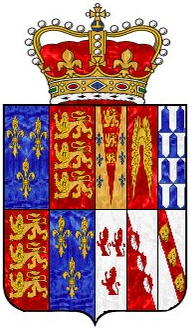 Jane Seymour Jane's coat of arms consists of the Tudor coat of arms on the left half combined with the family coat of arms of her ancestors. Quarterly of six: An Augmentation, Or, on a pile Gules, between six fleur-de-lis Azure, three lions passant guardant Or; Seymour; Beauchamp; Stiny; MacWilliams; and Argent, on a bend Gules, three leopard's head Or. |
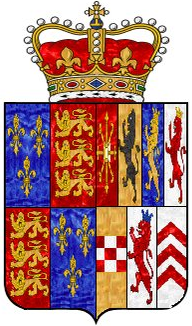 Anne of Cleves Anne's coat of arms consists of the Tudor coat of arms on the left half combined with the family coat of arms of her ancestors. Quarterly of seven: Gules, an Inescutcheon Argent, overall an escarbuncle Or (Cleves); Jülich; Schwarzburg; Limburg; Mark; Berg; and Ravensberg. | 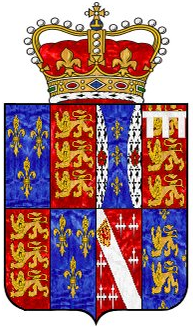 Katherine Howard Katherine's coat of arms consists of the Tudor coat of arms on the left half combined with the family coat of arms of her ancestors. Quarterly of four: Azure, three Fleurs-de-lys, in pale Or, between two flasches Ermine, each charged with a Rose Gules; arms of Thomas of Brotherton; Dukes of Howard arms; Azure, two Lions of England, the verge of the escutcheon charged with four half fleurs-de-lys Or. | 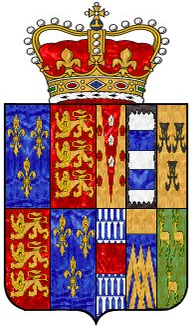 Catherine Parr Catherine's coat of arms consists of the Tudor coat of arms on the left half combined with the family coat of arms of her ancestors. Quarterly of six: An Augmentation, Argent, on a Pile Gules, between six Roses Gules, three other Roses Argent; Parr of Kendal; Ros of Kendal; Lords of Marmion; Lords Fitzhugh of Ravensworth; and Greene of Greens Norton. |
| Peerage of England |
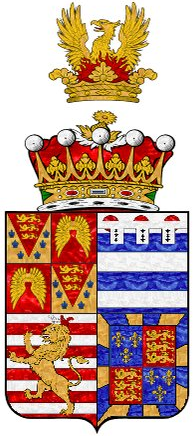 Edward, Lord Beauchamp Seymour | ||
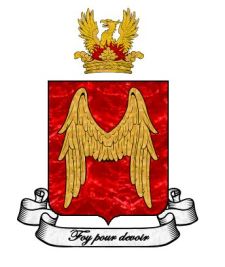 Sir John Seymour, father of Queen Jane Seymour | 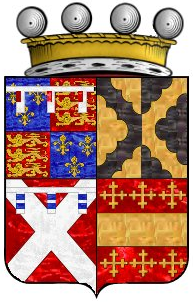 Henry Pole, 1st Baron Montagu | 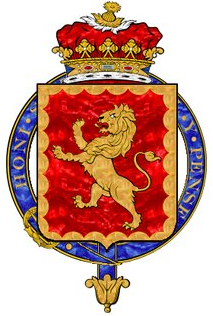 Earl of Shrewsbury |
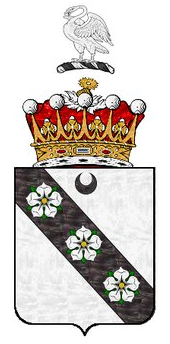 Henry Carey, 1st Earl of Dover |
Sources:
| LINKS:
|
